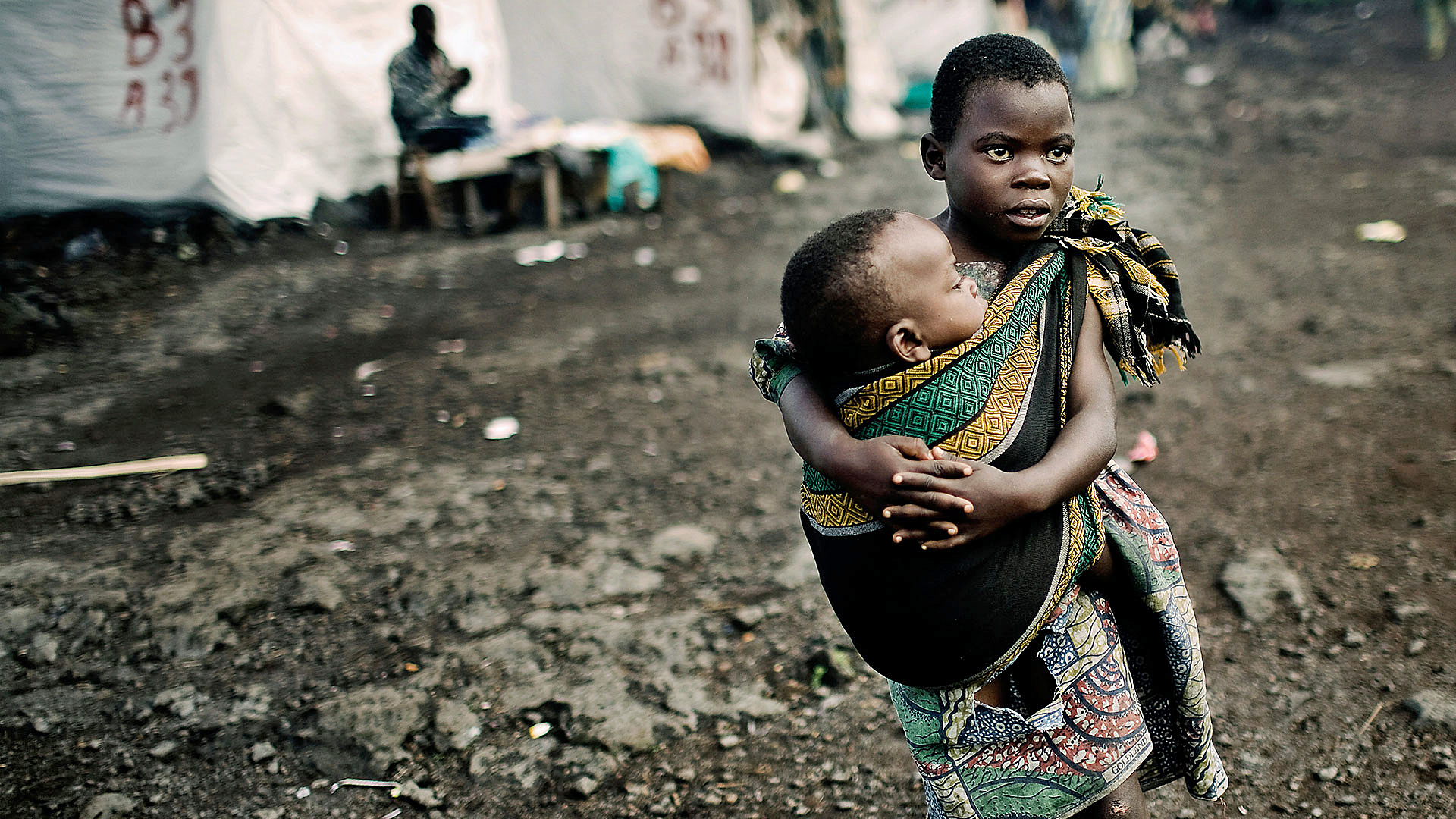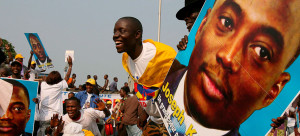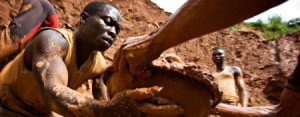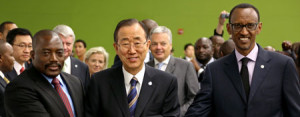PBS: Escaping Eritrea … [Read More...] about ካብ ውሽጢ ቤት ማእሰርታት ኤርትራ
The Eastern Congo
Ida Sawyer, Mvembe Dizolele, Ambassador Princeton N. Lyman and Jason Stearns | COUNCIL ON FOREIGN RELATIONS
Over the past two decades the eastern provinces of the Democratic Republic of the Congo have experienced fighting that has killed more than five million people. As the eastern Congo struggles to overcome years of regional war, its hard-won progress remains at risk.

For nearly two decades, the eastern provinces of the Democratic Republic of the Congo (DRC) have been the epicenter of the deadliest conflict since World War II. Part of a vast country straddling the heart of central Africa, the eastern Congo continues to defy efforts at pacification. As the conflict has morphed from a regional war to a series of tenacious local insurgencies, the civilians caught in the middle have paid the steepest price.
In addition to the ongoing humanitarian crisis, continued instability in sub-Saharan Africa’s largest country by area has strategic implications for the entire region. The DRC’s vast natural resources hold great potential but also complicate efforts at peace. The eastern Congo’s minerals power the world’s consumer electronics, and the country’s largely untapped farmlands have the potential to feed the rest of Africa. Yet disputes over these resources also drive the conflict, and rebel groups seek to control them to fund their own campaigns.
Subject to foreign interference since the colonial era, the eastern Congo poses difficult questions about the role of international intervention. The UN mission, the largest peacekeeping deployment in the world, has provided crucial support for the DRC’s peace process, but many observers argue that it lacks a clear strategy for sustaining the peace and eradicating the plethora of armed groups that remain. As the country seeks to consolidate its democratic progress with presidential elections in 2016, the Congolese government, Western policymakers, and regional leaders all face pivotal decisions.
Death, Displacement, and Deprivation
The wars that have raged in and around the eastern Congo since 1994 have heaped by far the greatest suffering on the civilian populations caught in the crosshairs. The death toll in the country has topped 5.4 million, the vast majority of these in the east, while nearly three million people remain displaced and more than one million women and girls have been victims of rape. Soldiers killed in direct combat have, by many estimates, totaled less than 10 percent of the conflict’s overall deaths.
Nor have civilian casualties been simply an unfortunate byproduct of fighting. Rather, civilians have been targeted for supporting opposing rebel groups or for their ethnic identity. They have been robbed, displaced from their homes and villages, and pressed into service as slaves. Women have borne the brunt of sexual violence, wielded as a weapon of war. Driven from their homes, many have died from hunger and disease.
The Congo crisis has from the start been defined by mass displacement, which has strained the resources and organizational capacity of UN relief agencies, the Congolese government, and humanitarian NGOs. The conflict began when nearly two million Rwandans crossed into the eastern Congo in the wake of the 1994 genocide. The region has since become home to semipermanent tent cities housing more than 2.7 million internally displaced Congolese as well as hundreds of thousands of foreign refugees. For civilians, the choice has often been between languishing in overcrowded camps, fleeing into the region’s dense jungles to be exposed to roving militias, or, for refugees, returning to their country of origin and risking persecution.
The persistence of more than forty different armed groups in the eastern Congo means that the death and disruption continue even as the ranks of the region’s major rebel organizations have shrunk. The largest remaining rebel army, the Rwandan Hutu Democratic Forces for the Liberation of Rwanda (FDLR, according to its French spelling), has been reduced to fewer than two thousand fighters, while most other groups number in the hundreds. These small and mobile guerrilla forces can survive by avoiding direct confrontation with UN and government soldiers, while continuing to terrorize villagers and exploit local resources.
Geopolitics of a Crisis
The Democratic Republic of the Congo spans a territory nearly the size of western Europe. Home to more than seventy million people, making it the world’s most populous French-speaking country, the DRC’s borders were originally defined by its Belgian colonizers in 1885. In addition to colonial domination, regional powers—the DRC is surrounded by nine other nations—have repeatedly intervened in its internal affairs.
With the national capital, Kinshasa, located nearly one thousand miles from the major eastern cities of Goma, Bukavu, and Uvira, the Congo has long defied easy governing. The hundreds of ethnic groups, myriad tribal languages, and divergent regional interests have proved fertile ground for recurrent rebellions against the central government. In eastern Congo, conflict has centered on the North and South Kivu provinces, as well as nearby Orientale, Maniema, and northern Katanga—an area roughly the size of California that counts more than twenty million residents. The region’s fertile highlands straddle the borders of Burundi, Rwanda, and Uganda, along the shores of Lake Kivu and Lake Tanganyika, and transportation between the west and east is arduous—most of the eastern cities can’t be reached by road from Kinshasa.
Violence in the eastern Congo has its roots in ethnic conflict dating back to the colonial era, which was then aggravated under the thirty-year dictatorship of Mobutu Sese Seko that began in 1965. The horrific scale of the recent fighting grew out of events beginning in 1994. That year, the genocide of nearly one million Rwandan Tutsis sparked a regional conflagration that came to be known as the “African World War.” After many Hutu genocidaires fled to eastern Congo and threatened incursons back into Rwanda, the Tutsi government of Rwanda led a retaliatory invasion in 1996 that would eventually entangle nearly all of the Congo’s neighbors. Sweeping from east to west, Rwandan forces, together with their regional partners and Congolese allies, overthrew Mobutu and installed a new government under Laurent Kabila.
The alliance broke down in 1998 when the new government in Kinshasa turned against Rwanda, ordering Rwandan and other foreign forces out of the country. Regional rebellions emerged, fracturing the country, and local militias sprouted up. Neighboring countries, divided between those supporting and those opposed to the Kinshasa government, once again invaded.
After several partial agreements, a 2003 peace deal pacified the west, but fighting in the eastern Congo continued. Pro-Rwanda rebels from the Congolese Tutsi, or Banyamulenge, populations concentrated in the Kivus clashed with the Democratic Forces for the Liberation of Rwanda (FDLR), the Rwandan Hutu militia tied to the 1994 genocide, as well as government soldiers. Other rebel groups, like the Ugandan Allied Democratic Forces (ADF), have been a target of the UN peacekeeping mission, MONUSCO, for years. The ADF, a small but potent force ensconced in the Rwenzori mountains on the border with Uganda, has remained a threat with a spate of deadly attacks in November and December 2015. Meanwhile, a multitude of ethnically based local militias, known as the Mai Mai, have added to the chaos with their opaque networks of shifting alliances.
Conflict Economies
While fighting in the eastern Congo flows from many sources—ethnic conflict, political grievances, and regional geopolitics—underpinning this volatile mix is the impoverished region’s so-called resource curse. Lack of economic opportunity boosts recruiting for armed groups, and competition for land and other natural resources often leads to violence. Completing the circle, rebel forces, often with outside collusion, feed off of the region’s wealth to perpetuate their armed struggles.
Decades of war and mismanagement have ravaged the Congo’s overall productive capacity. Despite having some of the world’s most valuable mineral deposits, Africa’s greatest hydropower potential, and vast expanses of fertile farmland, the country’s people live on an average of less than $200 a year—barely half of what they did in 1970. Even with impressive growth rates of over 9 percent in 2014 and 2015, economic progress hasn’t translated into broader prosperity in the eastern Congo. Unemployment remains above 50 percent, with levels even higher among the young and in the eastern Kivu provinces where much of the conflict is centered.
The Congo’s crumbling infrastructure, too, limits the economic activity and hobbles the central government’s efforts to defeat rebel groups. Internal commerce is greatly constrained and electricity is scarce, with less than 10 percent of citizens able to reliably access power.
Many in the east are thus left to fend for themselves, both economically and militarily. The resulting proliferation of militias has become deeply intertwined with local economies. The so-called conflict mineral trade has received particular attention due to the many mines that have come under the control of rebel groups and the importance of several of those minerals in cell phones and other consumer electronics. Informal, or “artisanal,” mining comprises up to one-fifth of the country’s economic output and employs millions of people in the eastern Congo. It is a ready source of income for rebels and corrupt government soldiers alike, as well as for traders from neighboring countries operating directly or through local armed allies.
Still, many experts say that mining is only one catalyst for the ongoing conflict. Some regional analysts argue that the eastern Congo is a “fully militarized” economy, with armed groups participating in every sector and able to leverage almost any valuable resource. Clashes over access to the eastern Congo’s fertile land, in particular, stretch back decades, and in some cases, centuries. Ethnic Tutsis originally from Rwanda have long fought with other groups over property and citizenship rights in the region. Even today many of the ongoing armed conflicts between villages and ethnic clans trace their origins to these disputes—and the advent of modern weaponry has led to increasing humanitarian costs.
As the central government attempts to resolve these conflicts and bring development to the east, it remains weak and highly dependent on outside support. The progress that has been made in pacifying some areas has been underwritten by a UN peacekeeping mission costing more than one billion dollars per year. Foreign donors supply nearly a fifth of Kinshasa’s total budget. It will likely fall to them to fund national general elections, whose costs are expected to exceed one billion dollars, in 2016.
Outside Forces
The Democratic Republic of the Congo won independence from decades of Belgian rule in 1960, but that did not mean the end of outside interference in its affairs. The country almost immediately became mired in Cold War geopolitics, with the United States supporting the thirty-year rule of anti-Communist dictator Mobutu Sese Seko. Under Mobutu, a declining economy, decaying infrastructure, and the deterioration of the armed forces combined to produce a weak state increasingly unable to govern and defend its own territory.
By the 1990s, tensions with Rwanda and internal instability that affected neighboring countries led to two “African World Wars” in the DRC that involved nine countries. Since Rwanda’s civil war between Hutus and Tutsis spilled over into the eastern Congo in 1994, Rwanda’s Tutsi-led government has repeatedly intervened, sending its own troops into the region and supporting its Congolese allies with logistical support. Uganda, too, played a major role, with its troops first supporting and then falling out with Rwandan forces in eastern Congolese territory. Other countries in the region, including Angola, Burundi, and Zimbabwe, have been drawn into the conflict at different stages.
Outside parties have also stepped in as peacemakers. The peace process that culminated in a 2003 transitional government was hosted by then–South African President Thabo Mbeki. The United Nations deployed the UN Organization Mission in the Congo (MONUC—later renamed MONUSCO), the largest and most expensive peacekeeping mission in its history, first to facilitate democratic elections and later to take the offensive against rebel groups.
After the emergence of yet another Rwanda-backed rebel group, the M23, in 2013, the United States led a new regional peace process that brought together the African Union, the European Union, and the UN. Pursued in coordination with the International Conference of the Great Lakes Region (ICGLR), a grouping of central African governments, these talks resulted in the Nairobi Declaration of December 2013. The declaration laid out a program for disarming the M23, demobilizing its fighters, and holding its leaders accountable.
All of these efforts have contributed to the tentative progress that has taken hold in the eastern Congo. None, however, have so far proved capable of ending once and for all the cycle of bloody insurgency.
Decision Points
As the Congolese government continues to pursue the remnants of rebel forces in the east, the country remains fragile. Progress—economic, military, and political—is real, but far from stable. Underlying issues such as land rights, citizenship, and power sharing remain unresolved as elections loom. The choices made by politicians, soldiers, and business leaders in the months and years to come will likely set the trajectory of the eastern Congo for decades. Hanging over eastern Congo’s future is the specter of renewed ethnic and communal violence and another generation of children lost to the ravages of disease, slavery, and war.
Developments in the following areas will be crucial.
2016 Elections

President Joseph Kabila, in power since 2001, is constitutionally barred from running for a third term in November 2016. However, speculation has swirled that Kabila will seek to remain in power nonetheless. Many in the DRC, including some of Kabila’s own political allies, have accused him of intentionally delaying elections as a way of creating glissement, or electoral slippage, to extend his stay in office.
Such a play for power would likely have serious repercussions for the authority of the central government, in particular in the eastern provinces. The perception of illegitimate rule in Kinshasa could spur new rebellions by disgruntled factions of the national army. In turn, the resulting political chaos could potentially encourage the DRC’s neighbors to once again attempt to influence events there through proxy forces. A peaceful, democratic transition, on the other hand, would be a watershed moment for Congolese institutions.
Conflict Minerals

The informal mining industry in the eastern Congo is in many places interwoven with the region’s armed groups. Some experts have argued that restricting these minerals from international markets could help smother the conflict. U.S. policymakers have sought to impose such restrictions through Section 1502 of the 2010 Dodd-Frank financial reform legislation, which requires publicly traded companies to disclose whether their products are “conflict free.” Similar European Union legislation approved in 2015 requires companies to perform due diligence, including third-party audits, to confirm that their supply chains do not contribute to the fighting.
However, some experts believe that such regulations will prove to be counterproductive to the goal of developing the eastern Congo, arguing that the rules have already contributed to putting millions of miners out of work. Other observers argue that armed groups are able to easily exploit other natural resources, such as timber, charcoal, or drug smuggling, in the face of pressure.
Regional Relations

Since 1994, the fate of the eastern Congo has turned largely on the actions of neighboring Rwanda. It has repeatedly intervened in the DRC, directly or through its proxies, in the name of defending itself from the Hutu genocidaires based there. The most recent proxy war, in 2013, was only brought to an end through U.S. pressure on the Rwandan government and a regional peace process aimed at reducing foreign interference in eastern Congo.
A final resolution of the conflict will hinge in large part on the ability of Rwanda and the DRC to forge constructive relations. Rwanda has stepped back from direct intervention, but its leaders allege that the Congolese government is unwilling to finally defeat the Hutu FDLR forces that have lingered in the region since 1994. This could potentially spark another round of escalation. The creation of more legitimate and transparent economic ties between the eastern Congo and its neighbors could bring local trading relationships out of the shadows and reduce the control of warlords over resources.
Disarmament, Demobilization, and Reintegration
A major challenge to peace has been the DRC’s faltering efforts to demobilize thousands of rebel fighters—whether by incorporating them into the national army or smoothing their transition into civilian life. Former rebels have repeatedly launched rebellions from within the military, including General Laurent Nkunda’s 2004 mutiny and General Bosco Ntaganda’s 2012 M23 uprising. This cycle has led some experts to decry the “revolving door” of the Disarmament, Demobilization, and Reintegration (DDR) process.
With the defeat of M23 and the ongoing campaign against the FDLR, the most recent DDR effort will require the Congolese government to manage more than eleven thousand ex-combatants. In addition to being disarmed and vetted for human rights violations, these ex-fighters will require job training and other economic support, which will likely cost more than $100 million. Without progress, fighters like these could decide it is in their interest to return to the battlefield.
International Actors
The United States is the country’s largest bilateral donor and the largest financial contributor to MONUSCO, providing a quarter of the total UN peacekeeping budget. President Barack Obama’s administration also raised the profile of the DRC in U.S. diplomacy by appointing former Senator Russell Feingold as special envoy to the Great Lakes region in 2013. In this role, Feingold brokered a regional peace agreement. As part of this endeavor, the United States created a framework for coordination with the African Union, the European Union, and the UN, and for the first time welcomed China to multilateral discussions. Feingold’s replacement, former Representative Thomas Perriello, was appointed in July 2015 and has been vocal about the need for Kabila to step down in 2016.
At the same time, the UN mission has reached a crossroads. The intervention brigade created in 2013 helped the Congolese army successfully defeat the M23 rebellion. But a planned joint UN-Congolese offensive against the remaining Hutu FDLR rebels fell apart in early 2015 over UN criticism of human rights abuses within the Congolese army. Meanwhile, Kabila has been pushing for the UN to begin reducing its twenty-two-thousand-strong force, exacerbating concerns that Kinshasa is not committed to defeating the FDLR.
Experts
-
- Ida Sawyer – Senior Researcher, Human Rights Watch
-
- Mvemba Dizolele – Lecturer, Johns Hopkins School of Advanced International Studies (SAIS)
-
- Ambassador Princeton N. Lyman – Senior Advisor, United States Institute of Peace (USIP)
-
- Jason Stearns – Director, Congo Research Group
